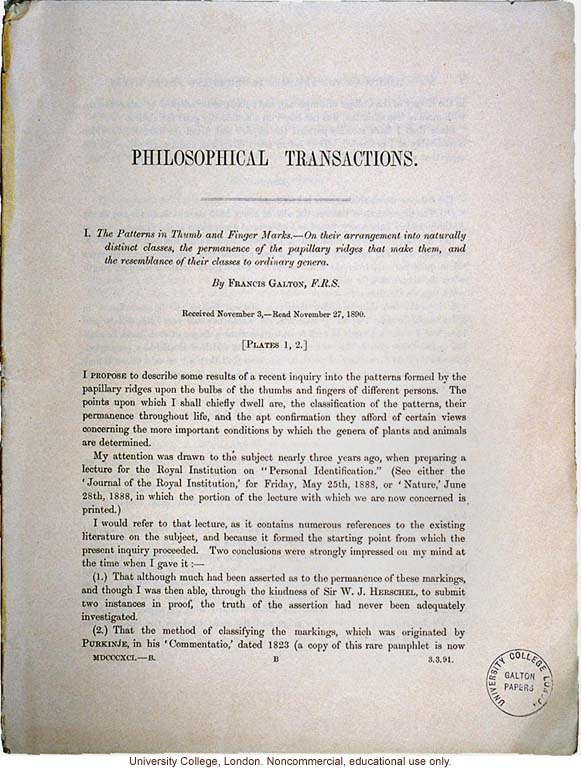[Centered Score]
Philosophical Transactions.
I. [italics]The Patterns in Thumb and Finger Marks.-On their arrangement into naturally distinct classes, the permanence of the papillary ridges that make them, and the resemblance of their classes to ordinary genera.[end italics]
By Francis Galton, F.R.S.
Received November 3,--Read November 27, 1890.
[Plates 1,2.]
I propose to describe some results of a recent inquiry into the patterns formed by the papillary ridges upon the bulbs of the thumbs and fingers of different persons. The points upon which I shall chiefly dwell are, the classification of the patterns, their permanence throughout life, and the apt confirmation they afford of certain views concerning the more important conditions by which the genera of plants and animals are determined.
My attention was drawn to the subject nearly three years ago, when preparing a lecture for the Royal Institution on "Personal Identification." (See either the 'Journal of the Royal Institution,' for Friday, May 25th, 1888, or 'Nature,' June 28th, 1888, in which the portion of the lecture with which we are now concerned is printed.)
I would refer to that lecture, as it contains numerous references to the existing literature on the subject, and because it formed the starting point from which the present inquiry proceeded. Two conclusions were strongly impressed on my mind at the time when I gave it:--
(1.) That although much had been asserted as to the permanence of these markings, and though I was then able, through the kindness of Sir W.J. Herschel, to submit two instances in proof, the truth of the assertion had never been adequately investigated.
(2.) That the method of classifying the markings, which was originated by Purkin[acute accent over 'j']e, in his 'Commentatio,' dated 1823 (a copy of this rare pamphlet is now MDCCCXCI.-B. B 3.3.91.
[stamped]University College London Galton Papers{end stamp]
[end]


